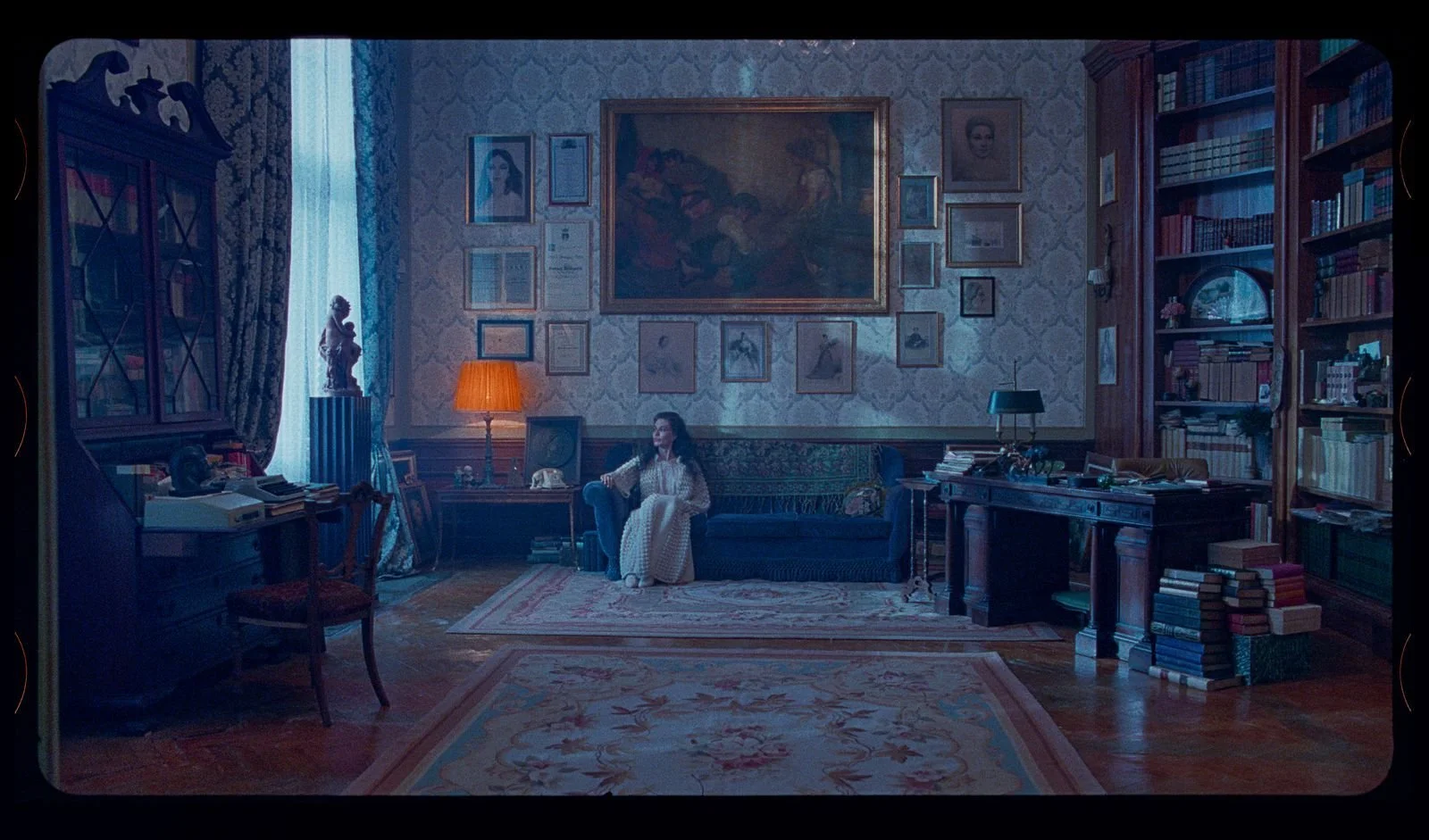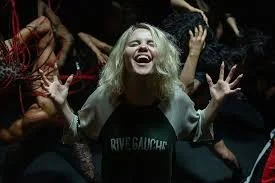New York Film Festival 2024
FILM AT LINCOLN CENTER, New York, NY
September 27 – October 14, 2024
Drake Stutesman
Some films to see:
MARIA
2024
Pablo Larraín
Italy / Germany / US
122 min.




Maria is an unusual, emotional and striking look at the life of Maria Callas, the operatic phenomena of the 20th century, whose soprano range and crystal-clear, luxurious voice was as famous in history as Enrico Caruso’s was in the 19th century. Callas’s fame had layers of stature. She was a woman of style and prowess and was an international celebrity, visible in the highest social circles. Focusing on the last seven days of her life, in 1977, living in Paris, the film portrays Callas as at a breaking point, with a voice that had weakened over the final years of her life, when she had been, at times, dismissed, even disliked, in public and in private, and she was disoriented, angered or unnerved by these experiences. This perspective and, one that is often prurient, is not an uncommon focus in a biopic of a fading super star. However, Larraín, known for his unusual angle on famous women during the end of their lives, as seen in Spencer, on Princess Diana, and Jackie, on Jacqueline Onassis, moves into Callas’s imagined last days with a surreal dream-like landscape (as he did in Spencer) and a kind of kaleidoscopic effect. In Maria, Larraín brings together all the cinematic pieces to create a mood of these last days, to affect a sense of a person trying to feel out their life in the last moments. He brings humanity to this with his choice of Angelina Jolie to play Callas. Jolie has a statuesque quality and a body awareness that she blends into her impersonation of Callas, a woman who is impossible to imitate. Jolie doesn’t try to imitate her, rather, she enacts a presence that stands out, a way of acting the part of Callas in Maria that is very effective. Larraín also uses a device of having critical young men torment Callas by hounding her. Perhaps these men are memories or perhaps are conjured out of fear. It is never clear. These young men act as Callas’s interior views. They are like Greek Furies who haunt her. This artifice adds to Larrain’s theatrical atmosphere in his fictional Callas world. He also uses intercuts of scenes with blazing floodlights, original black and white 1950s newsreel footage as well as scenes with Jolie that are made to look like archival film. Larraín uses cinema’s strongest elements to build this world, giving an equality to all its parts to define Callas without literally trying to “make” her. He places Jolie/Callas in a complex set design. The set is carefully created to affect a European tone of past centuries. It has the out of date showiness of aristocracy, now rich or poor, and dying out. The production designs by Guy Hendrix Dyas and set decorations by Virgile Alexandre and Sandro Piccarozzi are so powerful in their creation of an atmosphere that they almost rise to the level of a supporting actor. Callas’s Paris home is multi-surfaced, busy with personal bibelot, where tall walls are lined with pictures and artifacts and the tables crowed with lamps. Ed Lachman’s meticulous cinematography is also so powerful, in working with light and surfaces, that it too, in making the rooms, corridors, stages, and public places come alive, is almost a presence as strong as a supporting actor. Lachman shoots Callas’s home, in particular, to convey a feeling for Callas, who she is, through conveying its kaleidoscopic terrain with its complex surfaces, gleaming with glass covered photographs or prints and paintings in gilt frames and multiple lamps with lampshades of different hues, each reflecting and deflecting light. In severe contrast to these shiny planes, there are just as many muddy pastels of faded colors of the silk wallcoverings and brocaded fabrics which create an entirely different dappled light source landscape. In contrast again, costume designer Massimo Cantini Parrini dresses Callas in solid, simply cut, magnificent clothes, some, such as a gown or a coat, made to appear as wide swathes of monochrome. Larraín brings all these parts together so that the complex mixtures in Maria make the world the film builds cinematically realistically old as well as surrealistically in the moment, which allows Jolie’s Callas to seem whole and uncluttered.
Must see.
EMILIA PÉREZ
2024
Jacques Audiard
France
132 min.
Jacques Audiard leaps into a narrative world in Emilia Pérez, that is a wildly fearless mix of genres that would seem impossible to bring together, yet Emilia Pérez is a masterwork. Audiard gives a standard violent crime story an unexpected plot twist (there is no reveal of what that is in this review) that, once seen on screen, is so seamlessly part of the story that it easily makes the viewer think - why wasn’t that used as a plot twist before? Adding to this, Audiard takes another twist by turning the crime story into a riveting singing and dancing musical, with music by Clément Ducol and choreography by Damien Jalet. In all three elements the two genres of crime and musical, and the added explosive twist, Audiard tightly moves the film through his extraordinary leads, Zoe Saldaña, Karla Sofía Gascón, Adriana Paz and Selena Gomez, keeping the narrative as hard-nosed, economical, violent and tightly directed as many of Audiard’s films, such as the ingenious crime story The Beat My Heart Skipped (2005) and prison story A Prophet (2009). In Emilia Pérez, Audriad delivers in the same way but takes the extra extremes of overpowering the crime genre’s impact by making it a theatrical world (musical) yet retaining the crime narrative of extreme violence (the criminal world) that is very contemporary (the twist).
Must see.
SUBURBAN FURY
2024
Robinson Devor
US
118 min.
Robinson Devor’s documentary, Suburban Fury, is a fascinating piecework of a complex woman who stands out as representing the 1960s and 70s. She was involved in multiple elements of the turmoil of these decades, but she also stands out as an unusual woman. Sara Jane Moore attempted to kill President Gerald Ford in 1975, on a crowded street in San Francisco, in broad daylight. She was sentenced to life but was released after 32 years.
Devor grounds his film solely in his interviews with Moore because Moore refused to be interviewed at all unless Devore excluded anyone else from being interviewed. She wanted this to be her own story. He intersperses her words with deeply researched archival footage of the era and of the Bay Area. Devor interviews her many times, often in different locations, some at night, often in cars parked on a city street or a park side road, as she was paranoid about being watched by government. This brings a restless atmosphere to what could have been a staid documentary saturated in an interview format. The film is not driven by the crime of a presidential assassination attempt. The film is driven by Moore herself. She seems to be a mix of contradictions. She worked as an accountant for years. She was an FBI informant. She married and divorced five men, some active in far-left movements. She brought up four children. She was on fire with radical counterculture ideology when she shot Ford and stated she was expressing, what she underscored at her trial, as her “anger.” She’s closed-mouthed and she’s also outspoken. Devor deftly manages to open Moore’s world to the viewer yet never makes the film conclusive. He, with real talent, leaves the film as open as Moore’s experience is open and unanswerable.
Must see.





